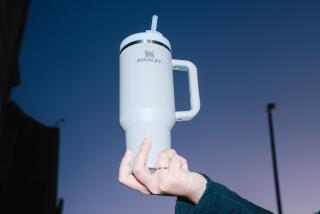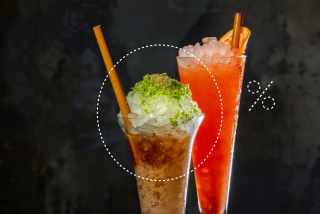Irish whiskey makers take their shot at a bold makeover
In a 200-year-old building on the docks of the River Suir, just a few hundred yards from where the Vikings first settled this town in the 10th century, one of the boldest experiments in the long history of Irish whiskey is being born.
Waterford Distillery is among a new crop of independent spirits makers that is transforming a sleepy business previously dominated by a handful of giant multinational companies.
Once considered a down-market cousin to the more glamorous smoky single-malts from Scotland, smoother, spicier Irish whiskey has experienced a renaissance in the last 10 years, with the number of independent distilleries and their sales growing exponentially.
Quality has improved too, but no one has yet tried to do anything on the scale of what Mark Reynier and his Renegade Spirits company are creating in Waterford. In addition to making a whiskey that is single-malt (which means all of the spirit comes from a single type of grain, created in a single distillery), Waterford Distillery also is making whiskeys that are single-farm — all of the grain used comes from individual small holdings.
Reynier’s team is trying to capture the true flavor of Ireland in a bottle.
It is a search for what winemakers call “terroir” (cheekily, the distillery is spelling it “téireoir,” a play on “Éire,” the Gaelic name for Ireland). Using barley grown on small farms all over southern Ireland, Waterford is separately brewing, distilling, bottling and selling the results of each farm’s grain.
It also is a shot across the bow of a more celebrated relative. Indeed, in a clear statement of ambition, Waterford insists on spelling its product “whisky” in the Scottish fashion, rather than “whiskey” as is more commonly used in Ireland. Insiders jokingly refer to it as a question of “To ‘E’ or not to ‘E.’”
The limited first releases were bottled in late summer and sold out within hours, even at a starting price of nearly $100 a bottle, which rivaled or exceeded many of Irish whiskey’s most famous names. There is even a hot secondary market as collectors compete for the few bottles to be found.
“The outcome of this grand experiment will be one of the most exciting unveilings of the year,” writes Gary Quinn in his indispensable guidebook “Irish Whiskey.” “If [their] vision is proved correct, and all indications so far would suggest they will be, the concept of terroir will become a very popular one in Irish whiskey.”
Unlike wine, where the differences between grapes trump all else, most of the differences in these drinks come from the soil. Since the 1950s, most Irish barley strains are so similar genetically due to standardized breeding that their effect on the taste of the whiskey is minimal, says Waterford’s head distiller, Ned Gahan. To investigate this further, he is planning future releases based on heritage strains of barley, including one from before the turn of the last century.
So far in 2020, Waterford has released 13 bottlings from six farms, including four exclusively for the United States. Another five are planned before the end of the year. The four American-only releases crossed the Atlantic in late September — three from single farms and the fourth an organic blend called Gaia that was just named Irish organic product of the year.
These whiskeys are produced in extremely limited amounts, most around only 10,000 bottles and some as little as 1,500 bottles. (By comparison, industry heavyweight Jameson sells more than 6 million bottles a year.)
This is a product designed for the whiskey aficionado, not the casual tippler, and it sells out quickly. You can find these whiskeys at some specialty Southern California spirits retailers or through the distillery’s importer, Glass Revolution.
Each bottle comes with a specific code that allows you to connect on the distillery website and savor enough background information to satisfy the most ardent nerd.
So you’ll find that your bottle of Waterford’s Dunmore (code: F017E01-01, if you’d like to play at home) comes from barley that was grown by a farmer named John Tynan in County Laois. What’s more, you’ll find not only a picture of Tynan in his field but also almost every conceivable fact about the whiskey’s background. There is a history of the farm, the dates the barley was planted and harvested, and when the grains were malted, fermented and distilled. There is even a photo of a cross-section of the soil (it’s described as “a fine loamy drift”) and a recording of the wind blowing through the branches of an old ash tree on the farm.
When Dunmore is sampled alongside the other American releases — Rathclogh, Dunbell and the Gaia blend — you’ll find that each has a slightly different personality. Dunmore tastes of caramel, vanilla and spice with a hint of candied apple in the background, while the others veer in favor of flavors that are more citrusy or even saline. The organic Gaia is probably the most complete at this point. It is composed of grains from several different farms because of the scant availability of organic barley.
These differences are noticeable even at a very young age. While most premium Irish whiskies are bottled after at least seven years in cask, the first Waterford releases have spent only three years in wood.
Future releases will feature the same base spirit aged longer. Each will be numbered like software — for example, the current Dunmore 1.1 will be followed at some date in the future by Dunmore 1.2, and so on.
The differences are even more obvious before the mellowing effects of the wood have been added. Trying two base spirits from different farms, one grown on stony soil, the other on rich loam, is almost like tasting two different beverages. The first is citrusy, smelling and tasting like a very good grappa. The other is warmer, almost autumnal. Gahan, a burly Irish farm boy, says the smell reminds him of just-turned soil in a spring field.
Waterford is far from the only new distillery in Ireland. The entire industry is experiencing a long-overdue rebirth. Just 10 years ago, Ireland had only four distilleries, owned by international drinks giants such as Casa Cuervo and Pernod-Ricard. These whiskey makers churned out dozens of different brands ranging from headache-inducing plonk to venerable greats such as Redbreast and Jameson.
Now there are more than 30 independent distilleries in Ireland, with more coming. And sales have kept pace. In 2019, international sales of Irish whiskey neared 12 million cases, double the 2010 figure.
Reynier’s efforts at Waterford, however, stand out as the most audacious. An Englishman who grew up in the fine wine business, Reynier previously resuscitated the single-malt Scotch distillery Bruichladdich, which he bought in 2000 for roughly $6 million and sold in 2012 for more than $40 million.
In 2012, he bought the Waterford facility for approximately $6 million and set about trying to remake Irish whiskey. The distillery’s administrative offices are located in the original 1794 brewery building, but the actual distilling is done in a hypermodern structure next door that previously was used for brewing the stout extract Guinness ships to its export markets.
In an interview with Ireland’s Think Business website, Reynier talks about his ambitions.
“What attracted me was an opportunity to make a difference in an industry that I believed was massively consolidated and industrial; and had lost the very essence of what it was originally all about — which was growing barley locally with individuality of flavor, associated with distilling on a local basis,” Reynier says.
More to Read
Eat your way across L.A.
Get our weekly Tasting Notes newsletter for reviews, news and more.
You may occasionally receive promotional content from the Los Angeles Times.






